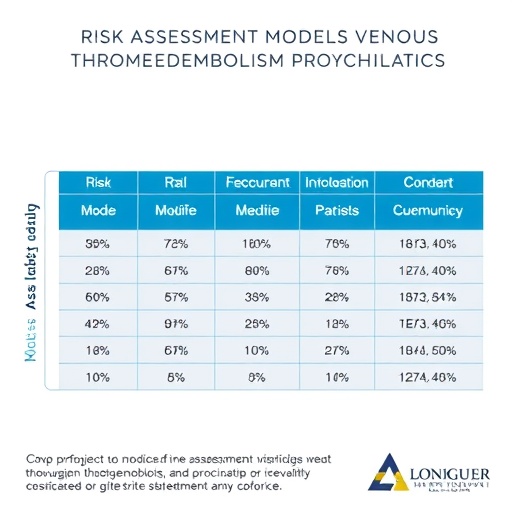In the ongoing quest to unravel the complexities of Alzheimer’s disease, a team of scientists at the Biodesign Institute at Arizona State University has proposed a groundbreaking theory that could unify the myriad factors affecting gene expression and cellular function. This innovative research underscores the potential role of chronic stress granules in disrupting cellular communications, ultimately leading to the devastating manifestations of Alzheimer’s disease.
Alzheimer’s disease is characterized by a bewildering array of symptoms, including cognitive decline, memory loss, and personality changes. These symptoms arise from profound disruptions in neurological function, making the disease an elusive target for researchers. Current understandings have largely focused on the presence of amyloid plaques and tau tangles as the defining markers of the disease, yet these phenomena do not fully capture the chaotic cascade of molecular events that occur in Alzheimer’s.
At the heart of this new theory lies the transport system responsible for shuttling crucial molecules, such as RNA and proteins, between the cell nucleus and the cytoplasm. The research suggests this transport dysfunction may be a critical driver of the disease, impacting gene expression across thousands of genes. The authors posit that, akin to a city-wide power grid failure, this breakdown inhibits the normal navigation of essential cellular components, paving the way for the neurological chaos that typifies the illness.
The scientists emphasize that Alzheimer’s pathology may not only be a product of late-stage cellular damage but rather may initiate years prior to the development of overt clinical symptoms. This underscores the importance of early intervention in the disease-modifying process, as the molecular disruptions could foreshadow other pathological changes, notably those related to amyloid and tau protein accumulations. By understanding the root causes of these alterations, researchers may identify new therapeutic targets that could help stop the disease in its tracks before it progresses to a more debilitating state.
Chronic stress granules are highlighted as the key agents of disruption. These structures typically form in response to cell stress, serving a protective role by temporarily pausing non-essential cellular functions. However, in the context of Alzheimer’s, these granules can become pathological, remaining in a state of persistence that drags vital cellular components down with them, restricting their access to the nucleus and thereby crippling vital gene processes.
Moreover, the research identifies a broad spectrum of genetic and environmental factors that may contribute to the stress response, such as certain mutations, inflammation, and exposure to environmental toxins. This combination leads to a cascade of events that exacerbate the dysfunction within the trafficking system of the cell, resulting in a profound impact on the essential processes that fuel synaptic function and overall cell health.
The potential to intercede at early signs of disease onset, particularly with a focus on stress granules, lends hope to a new frontier in Alzheimer’s research. Studies revealing these very early changes might inform novel strategies aimed at preventing the disease before it reaches an advanced celebratory stage. The aim is to shift the focus from symptom management to preventative strategies that could mitigate the eventuality of more dire conditions, changing the face of therapeutic intervention for Alzheimer’s.
Reflecting on the implications of their research, the authors observe that this understanding may shift the timeline of when Alzheimer’s can first be detected. This could prompt a reevaluation of intervention strategies, emphasizing the importance of monitoring individuals who may be at risk long before they exhibit signs of cognitive decline.
As this research progresses, its findings may serve as a clarion call for a paradigm shift in the treatment approaches traditionally employed in Alzheimer’s. Developing intelligent therapeutic strategies that can interrupt the vicious cycle enabled by chronic stress granules may very well open doors to early preventative measures that could dramatically alter the course of the disease.
The findings are not just another addition to the already extensive library of Alzheimer’s research; they represent a potential roadmap that connects the dots between various molecular phenomena and clinical manifestations. By redefining the core mechanisms that drive Alzheimer’s pathology, this study lays the groundwork for further explorations into the disease that could ultimately yield impactful updates to current medical practices.
In summary, the novel framework proposed by the Biodesign Institute researchers positions stress granules at the epicenter of Alzheimer’s pathobiology, offering not only an explanation for the massive changes in gene expression observed in afflicted individuals but also a potential target for future therapeutic interventions. These insights connect the biological underpinnings of Alzheimer’s to the stark realities faced by millions of families impacted by this debilitating condition. As researchers delve deeper into this uncharted territory, hope emerges that our understanding of Alzheimer’s could evolve into actionable and transformative medical strategies.
Subject of Research:
Article Title:
News Publication Date:
Web References:
References:
Image Credits:
Keywords:
Alzheimer disease, Gene expression, Chronic stress granules, Neurodegenerative diseases, Therapeutic interventions, Molecular biology, Cellular dysfunction, Early detection, Preventative strategies, Amyloid plaques, Tau tangles, Alzheimer’s research.
Tags: Alzheimer’s disease researchamyloid plaques and tau tanglesASU Biodesign Institute studiescellular communication and Alzheimer’schronic stress granules in Alzheimer’scognitive decline and memory lossgene expression in neurological disordersinnovative theories in Alzheimer’smolecular mechanisms of Alzheimer’sneurological function disruptions in Alzheimer’stransport system dysfunction in cellsunderstanding Alzheimer’s disease complexities





